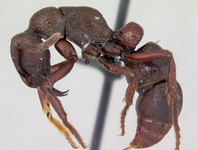Abstract
The tribal and generic classification of the diverse ant subfamily Ponerinae (Hymenoptera: Formicidae) is revised to reflect recent molecular phylogenetic information and a reappraisal of ponerine morphological diversity. The monogeneric tribe Thaumatomyrmecini (Thaumatomyrmex) is newly synonymized under Ponerini (syn. nov.), and the diverse genus Pachycondyla is fragmented into 19 genera, largely along the lines of its junior synonyms: Bothroponera, Brachyponera (gen. rev.), Ectomomyrmex (gen. rev.), Euponera (gen. rev.), Hagensia (gen. rev.), Megaponera (gen. rev.), Mesoponera (gen. rev.), Neoponera (gen. rev.), Ophthalmopone (gen. rev.), Pachycondyla, Paltothyreus (gen. rev.), Pseudoneoponera (gen. rev.), Pseudoponera (gen. rev.), and 6 new genera: Austroponera (gen. nov.), Buniapone (gen. nov.), Fisheropone (gen. nov.), Mayaponera (gen. nov.), Parvaponera (gen. nov.) and Rasopone (gen. nov.). Some junior synonyms of Pachycondyla are transferred to junior synonym status under other genera: Wadeura as a junior synonym of Cryptopone (syn. nov.), and both Termitopone and Syntermitopone as junior synonyms of Neoponera (syn. nov.). A new genus, Iroponera (gen. nov.), based on the new species Iroponera odax (sp. nov.), is described from Australia. Molecular and morphological justifications for these taxonomic changes are given alongside discussions of phylogenetic relationships. Keys to the world genera of Ponerinae are provided, and morphological diagnoses and species lists are given for each genus. Finally, the available information on ponerine ecology and behavior is reviewed and synthesized.

